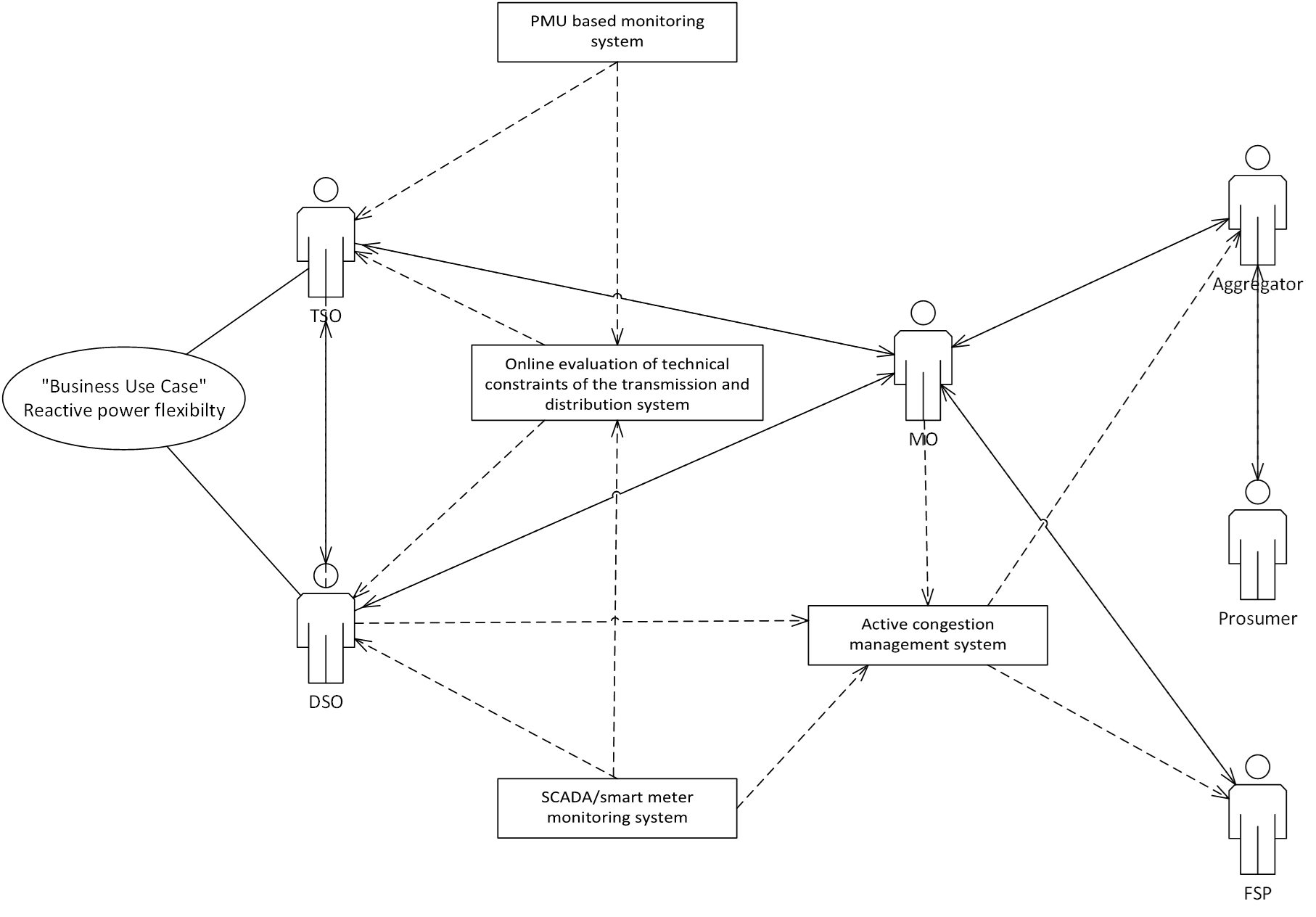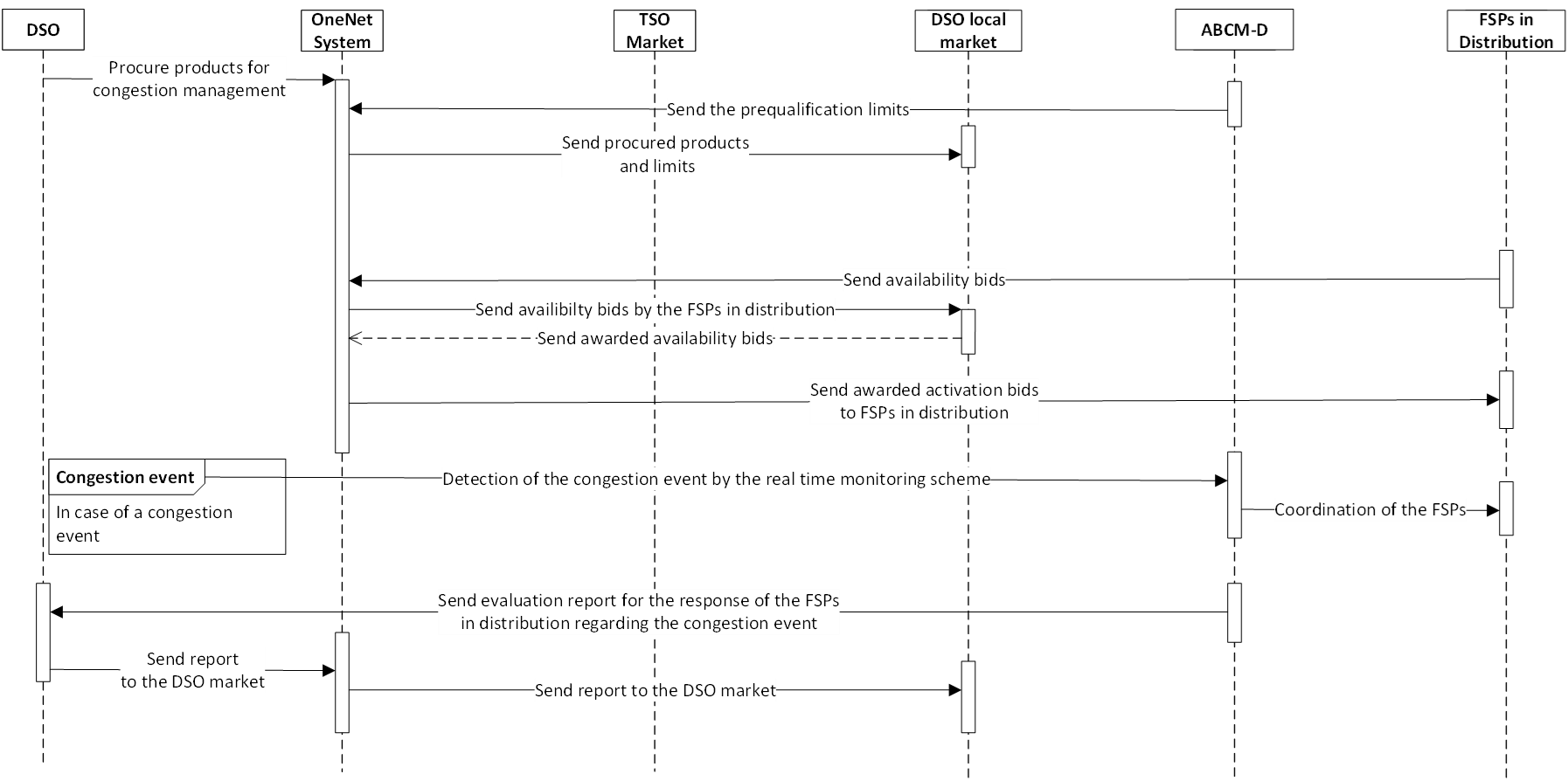SOCL-CY-02
Reactive power flexibility and power quality
1. Description of the Use Case
1.1. Name of the Use Case
| ID | Area /Domain(s)/Zone(s) | Name of the Use Case |
|---|
| 1 | Country market layer, | SOCL-CY-02 |
1.2. Version Management
| Version No. | Date | Name of author(s) | Changes | Approval status |
|---|
| 4 | 2021-08-03T00:00:00 | Markos Asprou, Lenos Hadjidemetriou, | None | None |
1.3. Scope and Objectives of Use Case
| |
|---|
| Scope | Enhance of reactive power flexibility and power quality (i.e., voltage support, congestion management, phase balancing) through the use of distributed flexible resources (energy storage and PV systems) |
| Objective(s) | • Maintain voltage stability |
| • Demonstrate congestion management for maintaining capacity limits of the grid | |
| • Achieve power quality enhancement | |
| Related business case(s) | None |
1.4. Narrative of Use Case
Short description
Cyprus power system favors the massive installation of PV due to the climate conditions (abundant of sun) in order to achieve the national environmental target. The high penetration of renewables in specific feeders causes local congestion problems (voltage and thermal limit violations) in the distribution grid. In addition, the majority of loads are single phase connected to the grid, creating intense phase imbalances and thus the power quality and the grid capacity are negatively affected.
Reactive power flexibilities provided within this use case will enhance the voltage stability, relieve the congestion of the system and increase the system efficiency, while phase balancing services will improve the power quality and increase the system capacity by symmetrizing the phase loading.
Therefore, this business use case exploits the flexible resources of the distribution grid (large energy storage systems, PV parks, prosumers) to provide reactive power and phase balancing services. These services will be procured by the distribution system operator (DSO) to the DSO local market. The information exchange between the DSO control center and the local DSO market will be facilitated by the OneNet system. The energy market will allocate the services to the different flexible actors (aggregators and prosumers) according to the market rules. The activation of these services will be coordinated by the operators and/or based on the grid operating conditions.
Currently, the reactive/voltage support is performed by reactors/capacitors installed in the transmission level or by predefined support schemes (i.e., cosφ(P)) provided by the PV inverters in the distribution grid. In addition, phase balancing has recently introduced in the IEEE standards for microgrids but has not been used in distribution grids. In this business use, reactive support and phase balancing will be provided by flexible resources and will be online coordinated by DSO to increase efficiency, relieve congestion, reduce curtailments and increase PV penetration. The flexible resources will be remunerated for these services enhancing their competitiveness in the energy market.
Complete description
The DSO monitors the system in real time to ensure the proper operation of the system within the desired limits. The monitoring of the distribution grid is enabled by smart meter and SCADA. In this BUC the Active Balancing congestion management platform at the DSO control center (ABCM-D) play a critical role, while the OneNet system facilitates the information exchange between the different actors in the distribution grid. A high-level description for the congestion management is provided below:
• The DSO procures congestion management products (phase balancing and reactive support) to the DSO local market.
• The DSO sends the location-based prequalified operational limits (as they were calculated through the ABCM-D platform) to the DSO local market in order to ensure the safe operation of the distribution grid.
• FSPs at the distribution level send their activation bids in the local DSO market
• The local DSO market is cleared and the awarded activation bids are sent to the qualified FSPs at the distribution level.
• In the occurrence of a power quality issue or voltage limit violation the awarded FSPs are activated through coordination signals sent by the ABCM-D platform in order to overcome grid congestion.
• The DSO through the ABCM-D platform evaluate the response of their FSPs to the congestion management event and send an evaluation report to the DSO local market.
| ID | Name | Description | Reference to mentioned use case objectives |
|---|
| None | Voltage limits violations | This indicator will provide information for the duration and the intensity of the over/under-voltage conditions occurs at the distribution grid | Congestion management, Voltage stability, |
1.6. Use case conditions
| Relation to other use cases |
|---|
|
| Level of depth |
| Prioritisation |
|
| Generic, regional or national relation |
| Regional and national |
| Nature of the use cases |
| BUC |
| Further keywords for classification |
| Reactive power, flexibility, voltage stability, congestion, power quality |
2. Diagrams of Use Case



3. Technical Details
3.1. Actors
| Actor Name | Actor Type | Actor Description | Further information specific to this Use Case |
|---|
| Transmission system Operator | Business | A party responsible for operating, ensuring the maintenance of and, if necessary, developing the system in a given area and, where applicable, its interconnections with other systems, and for ensuring the long-term ability of the transmission grid to meet reasonable demands for the transmission of electricity. | |
| Distribution system operator | Business | A party responsible for operating, ensuring the maintenance of and, if necessary, developing the system in a given area and, for ensuring the long-term ability of the distribution grid to meet reasonable demands for the distribution of electricity. | |
| Aggregator | Business | A party that aggregates resources for usage by a service provider for energy market services. | |
| Prosumer | Business | A party that produces and consumes electricity. | |
| Market operator | Business | A market operator is a party that provides a service whereby the offers to sell electricity or electricity flexibility are matched with bids to buy electricity or electricity flexibility. | |
| Flexibility Service Provider (FSP) | Business | A party providing flexibility services to energy stakeholders via bilateral agreements or flexibility markets. | |
3.2. References
| No. | References Type | Reference | Status | Impact on Use Case | Organistaor / Organisation | Link |
|---|
4. Step by Step Analysis of Use Case
4.1. Overview of Scenarios
| No. | Scenario Name | Scenario Description | Primary Actor | Triggering Event | Pre-Condition | Post-Condition |
|---|
| 1 | Reactive power compensation and power quality enhancement | Monitoring and evaluation of the distribution grid operating conditions by the DSO. In case of voltage or power factor limit violation the DSO will coordinate the flexible resources to provide reactive power flexibility and power quality services (phase balancing). The flexible resources participating in this scenario have already been awarded by the market (declaring their availability through bids) and their bids have been pre-qualified by the DSO in order to participate to the reactive power compensation and power quality enhancement. | | Reactive power compensation and power quality enhancement | | |
Notes
4.2. Steps – Scenarios
| Scenario Name: |
|---|
| Reactive power compensation and power quality enhancement |
| Step No. | Event. | Name of Process/ Activity | Description of Process/ Activity. | Service | Information Producer (Actor) | Information Receiver (Actor) | Information Exchanged | Requirements, R-ID |
|---|
| Information exchanged ID | Name of Information | Description of Information Exchanged | Requirement |
|---|
6. Requirements (optional)
| Category Identifier | Name | Description | mRID |
|---|
| Req_ID | Req_Name | ‘Reactive power flexibility and power quality’ | |
| Identifier | Name | Description | mRID |
|---|
| I1-01 | Procured products | DSO procures products for congestion management services | I1-01 |
| I1-02 | Prequalified limits | DSO send to market the location based prequalified limits that should be respected. | I1-02 |
| I1-03 | Bids of the FSPs | FSPs send bids for the congestion management products to the market | I1-03 |
| I1-04 | Awarded bids | Market sends the awarded bids to the qualified FSPs in the distribution level | I1-04 |
| I1-05 | Measurements | Measurements from smart meters are reported to the DSO AMI | I1-05 |
| I1-06 | Coordination signals | Coordination signals are sent to the flexible resources by the DSO. | I1-06 |
| I1-07 | Measurements | Smart meters and SCADA measurements are used for evaluating the response of FSPs during the congestion management event | I1-07 |
| I1-08 | Report | DSO report to the market operator the evaluation report for the congestion management services by the flexible resources | I1-08 |
7. Common Terms and Definitions
| Key | Value | Refers to Section |
|---|


